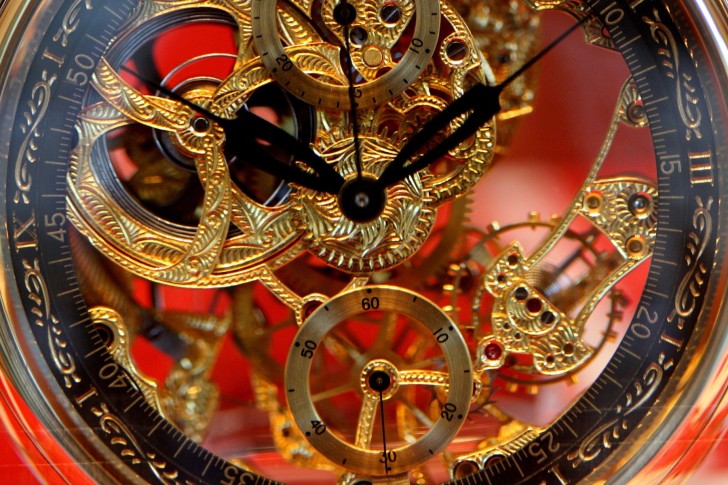Luxury revenues grew by 10 percent in 2012 (at current exchange rates), given the strong growth tailwinds present in the first half of last year, according to Bain & Company, the leading advisor to the global luxury goods industry, in the Spring 2013 update to its “Luxury Goods Worldwide Market Study”. All growth estimates for 2013 and beyond are at constant exchange rates.
Worldwide luxury goods market revenues will grow as much as 50 percent faster than global GDP, with an expectation of four to five percent growth in 2013 and five to six percent annual average through 2015, on track to break the €250 billion sales threshold by mid-decade.
“We are seeing a more even distribution of global growth,” said Claudia D’Arpizio, a Bain partner in Milan and lead author of the study. “In turn, brands are refocusing from short-term, reactive hot spot thinking to long-term sustained growth strategies.”
“We are entering a new phase in the evolution of the luxury market,” concluded D’Arpizio. “More markets, more segments, and more diversity of tastes all combine to create more variables to solve for when pursuing the right strategy for growth.”
Over the long term, Bain estimates that the global luxury goods market in 2025 will likely be more than five times larger than it stood in 1995. The key for winning in the luxury market over the next 10 to 15 years, says Bain, is “to get ready for Luxury 2.0,” where success will be defined by a relentless focus on three luxury goods management principles: superior customer experience, flawless retail management, people excellence:
Superior customer experience
- Luxury will depend more than ever on word-of- mouth promoters who share their delight with products and experiences
- Consumers expect every interaction in stores, online, and on mobile devices to be premium, differentiated, and targeted to their tastes and preferences
- Marketing must maintain a persistent drumbeat of innovation in media and messaging to keep consumers connected to what’s new.
Flawless retail management
- Physical and digital storefronts are accelerating their arms race for offering more compelling engagement to wow the luxury shopper
- The era of the disengaged, formal shopping experience is ending. Shoppers now expect inviting and personalized service to welcome them into the store
- As store networks grow into new markets and tap new segments, the bar is raised for ensuring the right products are in the right stores in the right quantities.
People excellence
- Brands are investing more in top management talent from strategy to finance to supply chain to back office operations
- The store employee serves as brands’ direct face to shoppers, with brands expending significant resources on training and development of people on the front lines.
- Luxury players are more and more putting the customer first in their strategies.
Bain’s spring update sees the key drivers of the luxury goods market as:
WHO
- Tourists are changing their consumption habits, seeking out new destinations (e.g., Dubai, South East Asia, Australia) and showing more savvy in the items they purchase
- Each year, more “HENRYs” (High Earnings, Not Rich Yet) become potential customers, with ten times as many HENRYs as ultra-affluent individuals
- The rise of the middle class in emerging countries is polarizing the competitive arena, becoming a “new baby boom sized generation” for luxury brands to target.
WHAT
- Absolute luxury items (consisting of high-end products with no logo, highest quality materials, and exquisite craftsmanship) lead the way
- Despite some recovery of spending on apparel, leather goods and other accessories will continue growing faster than other categories
- Watch consumption has sharply decelerated as retailers de-stock and as Chinese luxury consumers slow their purchasing
- Cosmetics are slowing down in mature markets, while still delivering growth in emerging markets.
WHERE
- High consumer confidence among the affluent, increased store openings in American cities, and intensive investment in linking physical and digital shopping are all fueling United States sales growth.
- The impact of 12 percent sales growth across Central and South America (notably Brazil and Mexico) will result in overall growth of five to seven percent in the Americas.
- In Asia, growth in China is stabilizing to an expected seven percent, while South East Asia will experience 20 percent growth driven by a wave of new store openings, and increasing strength and relevance of second-tier markets.
- Japan returns to a strong growth story of five percent as the country’s monetary policy depreciates the yen and pushes local consumption.
- Europe remains a challenge for the industry; as tourism slows, as tourists spend less per visit, and as Europeans, especially in southern Europe, curtail spending—Bain expects flat-to-two percent growth.
- Middle East is growing at a steady pace, with Dubai continuing as the center of gravity and the only city attracting foreign luxury consumers (e.g. Russians, Indians, Africans).


